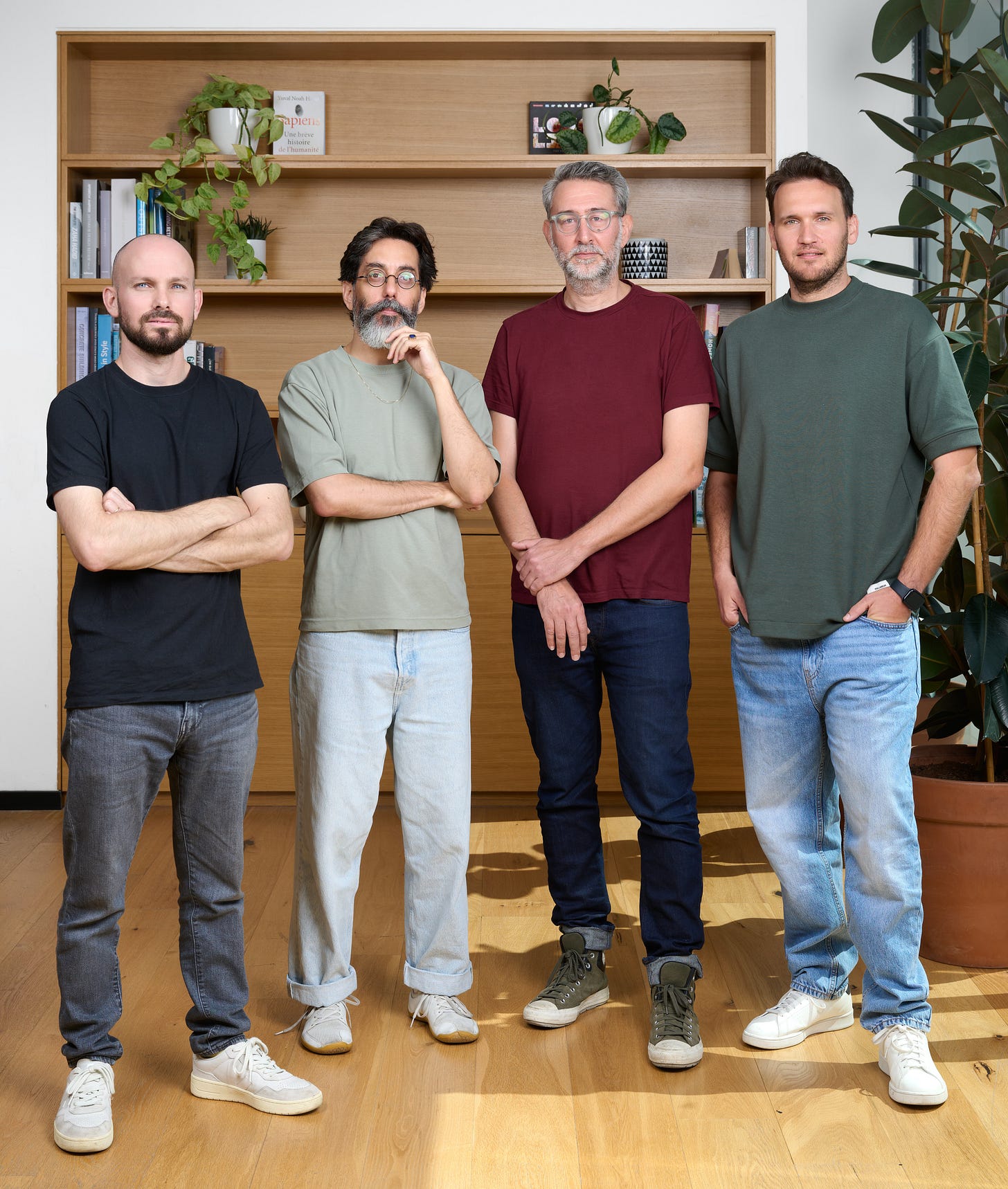Interview: Itay Schiff — Scaling Creativity with Weavy.ai without Sacrificing Craft
Weavy.ai redefines design by blending AI with artistry, enabling teams to scale creativity while preserving uniqueness, collaboration, and process excellence.
I recently had the opportunity to discover Weavy.ai first-hand. While my detailed product review will follow soon, I also spoke with the team to gain a deeper understanding of the platform's underlying thinking. Here, I share insights into Weavy’s vision (by its co-founder Itay Schiff), its designer-friendly approach, and the challenges and opportunities shaping the future of embedded collaboration. Stay tuned for the full review:
Image: Weavy Team, credits @Weavy.ai
What’s the original problem Weavy set out to solve, and how has that vision evolved as designers started integrating it into their products?
Weavy started with a simple but ambitious goal: to close the gap between AI and the artist. Early on, design tools promised speed, but often at the cost of craft. We set out to build a system where designers could scale their ideas without sacrificing creative excellence. As more types of users began integrating Weavy, the vision expanded from a tool for individuals into “design machines” that power entire creative teams.
From a designer’s perspective, what are the most overlooked or under-appreciated features in Weavy that you wish more teams explored?
One underappreciated strength is how modular Weavy is. Our nodes let designers mix classical design tools with AI in a single flow - something that looks simple but unlocks huge flexibility. Another is our ability to capture processes, not just pixels. Teams often focus on the outputs, but the real power is in how Weavy documents and scales the creative process itself.
How do you balance the trade-off between offering powerful collaboration components and keeping integration lightweight and designer-friendly?
Designers and visual artists shouldn’t have to wrestle with excessive complexity to gain control or scale. At the same time, we offer depth where it matters: features like compositing, working with 3D, workflow sharing, and the design-app are there for teams ready to go deeper. That balance is what allows Weavy to serve content creators without overwhelming them.
What does success look like for you: is it measured by the number of apps embedding Weavy, by end-user engagement, or something else entirely?
For us, success is measured by impact. Yes, we track adoption and engagement, but the true metric is whether creative teams can scale their artistry without compromise. If Weavy becomes the backbone that allows people to orchestrate AI as a collaborator rather than a replacement, that’s success.
Looking ahead, what do you see as the most significant opportunities (or challenges) in the embedded collaboration space over the next 2–3 years?
Over the next 2–3 years, the big opportunity is to redefine design itself. Artists will not produce one-offs any more, they’ll build workflows, processes, and creative intelligence. The challenge is keeping this human. As AI accelerates, the risk is homogenization. Our job is to ensure tools like Weavy scale uniqueness, not sameness.
Artists will not produce one-offs any more, they’ll build workflows, processes, and creative intelligence. The challenge is keeping this human.
Image: Itay Schiff, credits @Weavy.ai
Our job is to ensure tools like Weavy scale uniqueness, not sameness.
Weavy.ai positions itself not simply as a design tool but as a creative infrastructure — one that scales artistry without compromise. By focusing on processes, collaboration, and human uniqueness, it seeks to ensure AI becomes an empowering partner, not a replacement. The future of design may be shaped not by isolated outputs but by orchestrated creative systems, and Weavy is intent on leading that shift.
Stay tuned for the full review.



